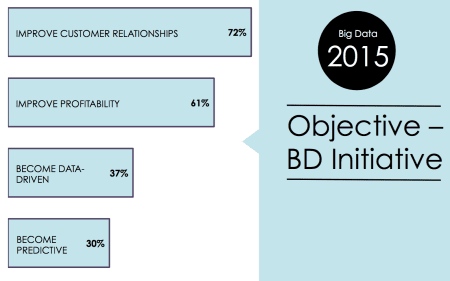The term “big data” is bandied around frequently in business circles, often with reverence. It raises some big questions for field service leaders: What, exactly, does big data mean for my business? Where do I collect the data? How do I understand it? Am I behind my competitors?
We asked The Service Council’s Sumair Dutta to help us sort through the confusion. Dutta’s ongoing research has found that two-thirds of field service organizations are experimenting with big data. But it’s still early days for data-driven decision making in field service, and companies are unsure about how to use their data to uncover new revenue opportunities.
Below, Dutta explains how service leaders can tap data today, what changes they should expect in the future, and what technology and talent investments are necessary.
Will all service organizations eventually benefit from big data, or will it be a tool for only the largest companies?
Dutta: The word “big” is misleading. The term created an expectation that it required a large investment that only large companies, with a lot of resources, could undertake. That’s a misnomer, because big data is really about making sense of whatever data your have — no matter how much or little. The real promise of big data is giving business leaders a map of where they could invest, or should invest, resources to produce a desired outcome. This is something that all organizations can benefit from.
Big data is really about making sense of whatever data your have — no matter how much or little. — Sumair Dutta
What are those top decisions field service leaders will make with their product and customer data?
Efficiency is the lowest-hanging fruit. Once a company gains visibility into the performance of their products, they can start finding ways to make them more efficient.
There are two charts from our initial big data survey results that reveal what service leaders with a big data initiative want to do with better data. One is to improve customer relationships by better understanding customer needs. The other is improving profitability by finding new revenue opportunities.Those are the top two objectives of big data initiatives in field service right now.

Image: The Service Council
Another chart showed what decisions respondents would make with better data. The top priority was pricing for service offerings. It’s no longer just to have a flat price for service. Now, there’s the expectation that companies can charge variable prices to customers because they have data on each customer’s preferences.
With the aid of data, organizations are looking to improve customer relationships and profitability through better pricing structures, better outreach, better protocols for serviceability and, finally, better resource allocation. — Sumair Dutta
What about the longer term goals that are harder to achieve?
Improving revenue opportunities is the biggest area. There are two or three avenues that companies prioritize to the top. One is in using existing front-line employees to be more sales-oriented. Perhaps they don’t sell directly, butt they have the tools to identify sales opportunities, communicate those opportunities to customers and record them so somebody follows up.
The other way that companies are looking to generate revenue is through new services. Executives ask, “What else can we be providing, beyond break-fix service?” By understanding how companies are using your products and services, you can generate new lines of services to sell. You can even sell that data back to customers to show them how their usage stacks up against industry averages. This isn’t new, but it’s happening a lot more frequently.
What big investments do companies realize they need to invest in now to capture and analyze data?
First is the technology necessary to capture and analyze the data. That includes their own investments in things like storage, servers and security, plus what they can outsource to the cloud.
What new types of people, or specific skills, does the typical service organization need to make a big data play?
There are three where companies need to look at investing in terms of talent:
- People to help with the background data infrastructure, such as data architects.
- People who can analyze data, including analysts and data scientists.
- People who will manage data across the company, such as a chief data officer.
For smaller and midsize companies, the immediate role that will be needed is the data analyst. They’ll get the system in place and help with the decision making. Once companies understand their other needs, they’ll either hire those folks or rely on a network of partners for help.
Check out The Service Council’s upcoming free webinar (8/20) on how new technology trends, including big data, affect service businesses. Register here.


Share this: